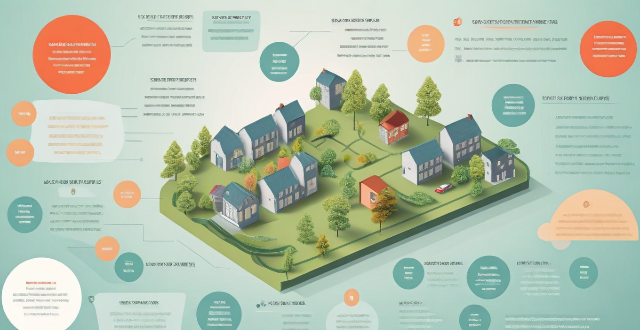Businesses can use climate risk assessments to make informed decisions by identifying and evaluating potential impacts of climate change on operations, supply chains, and financial performance. They should assess the impact on business operations, incorporate these assessments into strategic planning, develop adaptation and mitigation strategies, monitor and update assessments regularly, and engage stakeholders in the process. By doing so, companies can prioritize areas where they need to take action, reduce exposure to risks, ensure that long-term goals consider potential effects of climate change, adjust operations to cope with impacts, reduce greenhouse gas emissions, stay ahead of emerging challenges, and build a culture of sustainability within the organization.

How Can Businesses Use Climate Risk Assessments to Make Informed Decisions?
Climate risk assessments are essential tools for businesses to understand the potential impacts of climate change on their operations, supply chains, and financial performance. By conducting a thorough analysis of these risks, companies can make informed decisions that help them adapt to changing environmental conditions and mitigate the negative effects of climate change. Here are some ways in which businesses can use climate risk assessments to inform their decision-making processes:
1. Identify and Evaluate Climate-Related Risks
The first step in using climate risk assessments is to identify and evaluate the potential risks associated with climate change. This involves analyzing data on temperature changes, precipitation patterns, extreme weather events, and other climate-related factors that could affect the business. By understanding these risks, companies can prioritize areas where they need to take action and develop strategies to address them.
2. Assess the Impact on Business Operations
Once the climate-related risks have been identified, businesses should assess how these risks might impact their operations. This includes evaluating the potential effects on production facilities, transportation networks, energy consumption, and other critical aspects of the business. By doing so, companies can identify vulnerabilities and develop plans to reduce their exposure to these risks.
3. Incorporate Climate Risk Assessments into Strategic Planning
Businesses should incorporate climate risk assessments into their strategic planning processes. This involves considering the potential impacts of climate change when developing long-term goals and objectives, as well as short-term plans for managing resources and capital investments. By integrating climate risk assessments into their planning processes, companies can ensure that they are making informed decisions that take into account the potential effects of climate change.
4. Develop Adaptation and Mitigation Strategies
Based on the results of the climate risk assessment, businesses should develop adaptation and mitigation strategies to address the identified risks. Adaptation strategies focus on adjusting the business's operations to cope with the impacts of climate change, such as improving infrastructure resilience or diversifying supply chains. Mitigation strategies, on the other hand, aim to reduce the company's greenhouse gas emissions and contribute to global efforts to combat climate change.
5. Monitor and Update Climate Risk Assessments Regularly
Climate risk assessments should be conducted regularly to ensure that businesses remain up-to-date with the latest climate science and information about emerging risks. This allows companies to adjust their strategies as needed and stay ahead of potential challenges related to climate change.
6. Engage Stakeholders in the Process
Finally, businesses should engage stakeholders, including employees, customers, suppliers, and investors, in the process of conducting climate risk assessments. By involving these groups in discussions about climate risks and opportunities, companies can build support for their adaptation and mitigation strategies and foster a culture of sustainability within the organization.
In conclusion, climate risk assessments are crucial tools for businesses seeking to make informed decisions in the face of climate change. By identifying and evaluating climate-related risks, assessing their impact on operations, incorporating these assessments into strategic planning, developing adaptation and mitigation strategies, monitoring and updating assessments regularly, and engaging stakeholders in the process, companies can better position themselves to thrive in a changing climate.